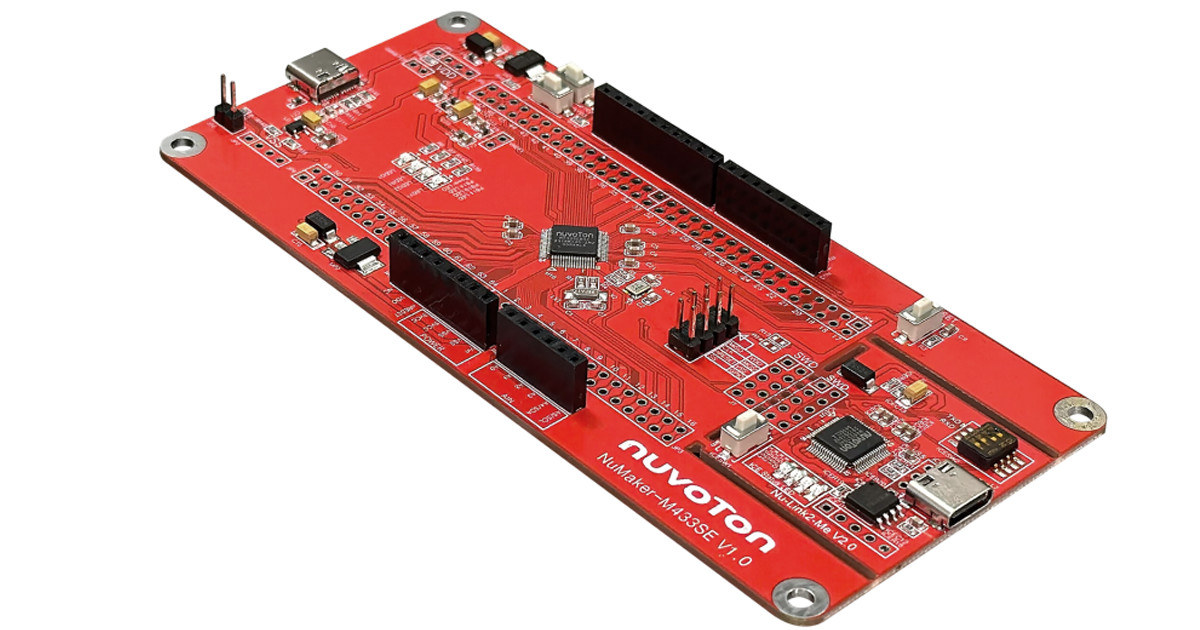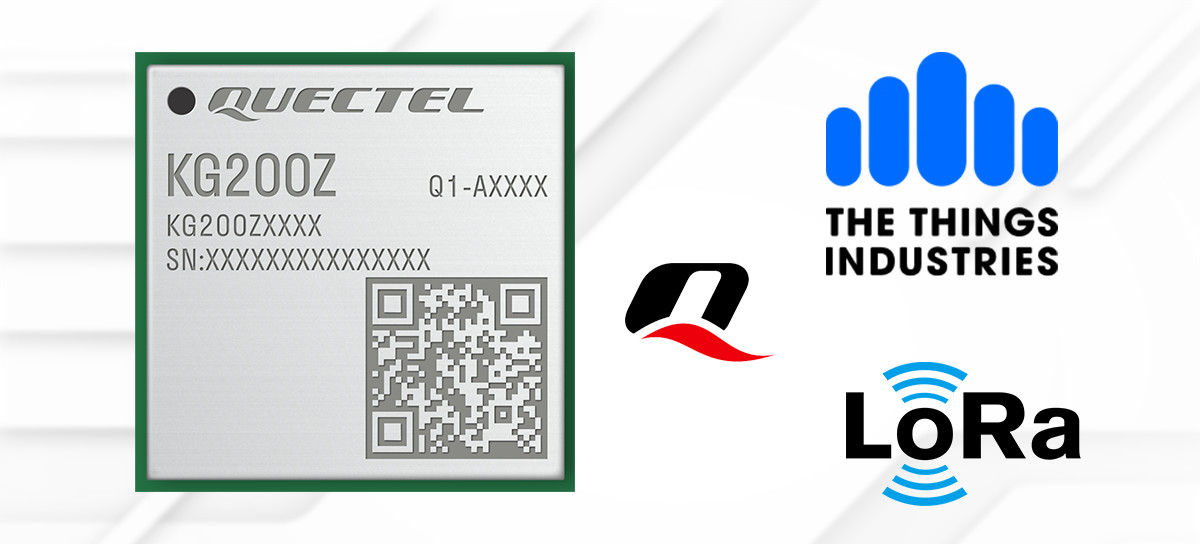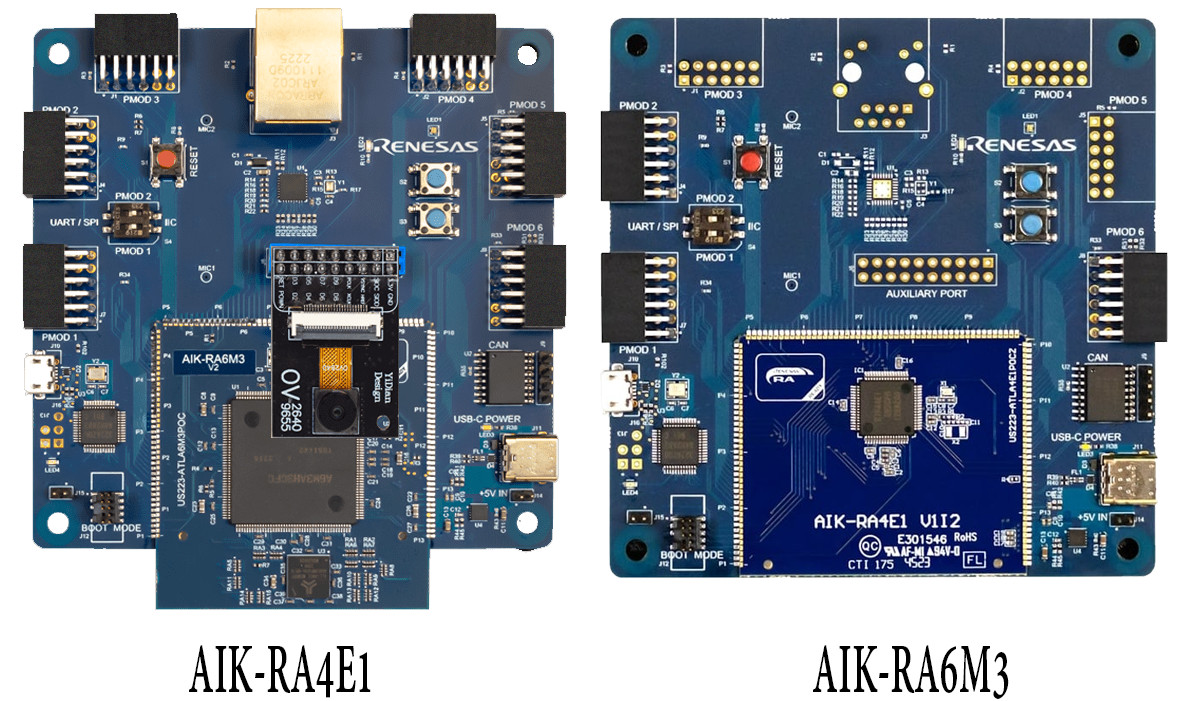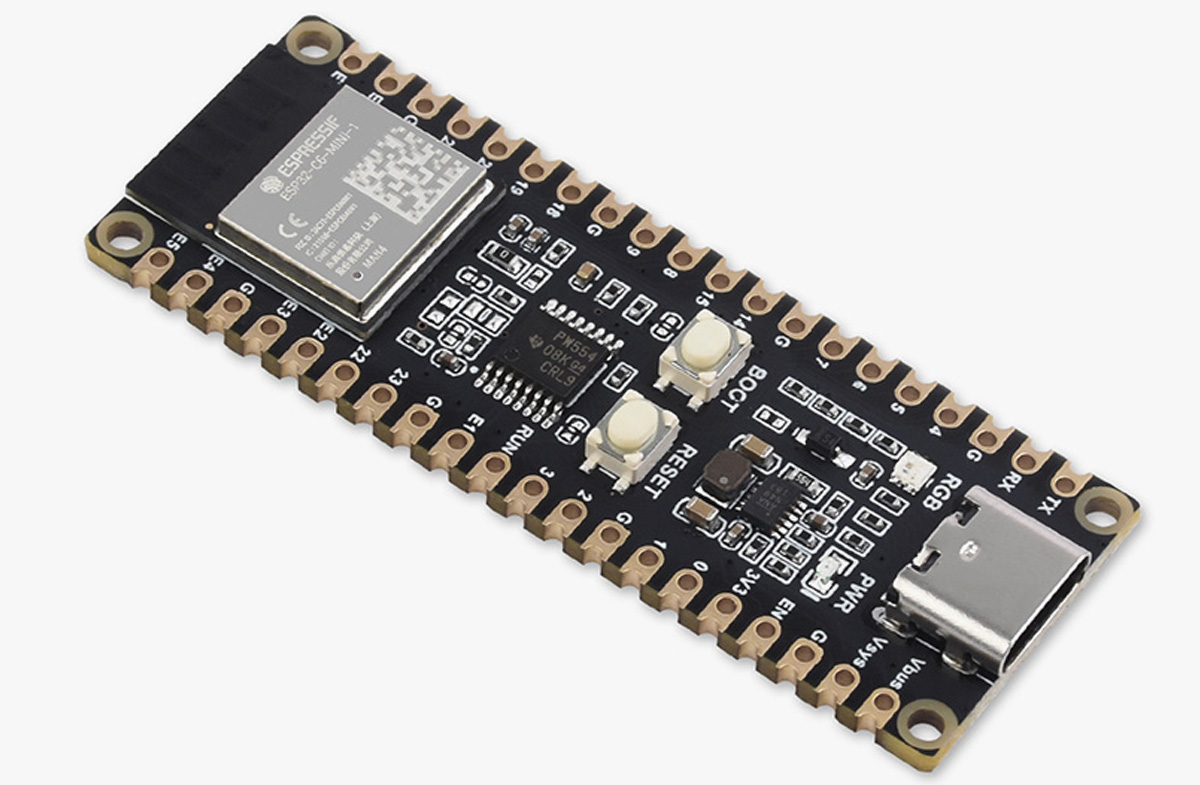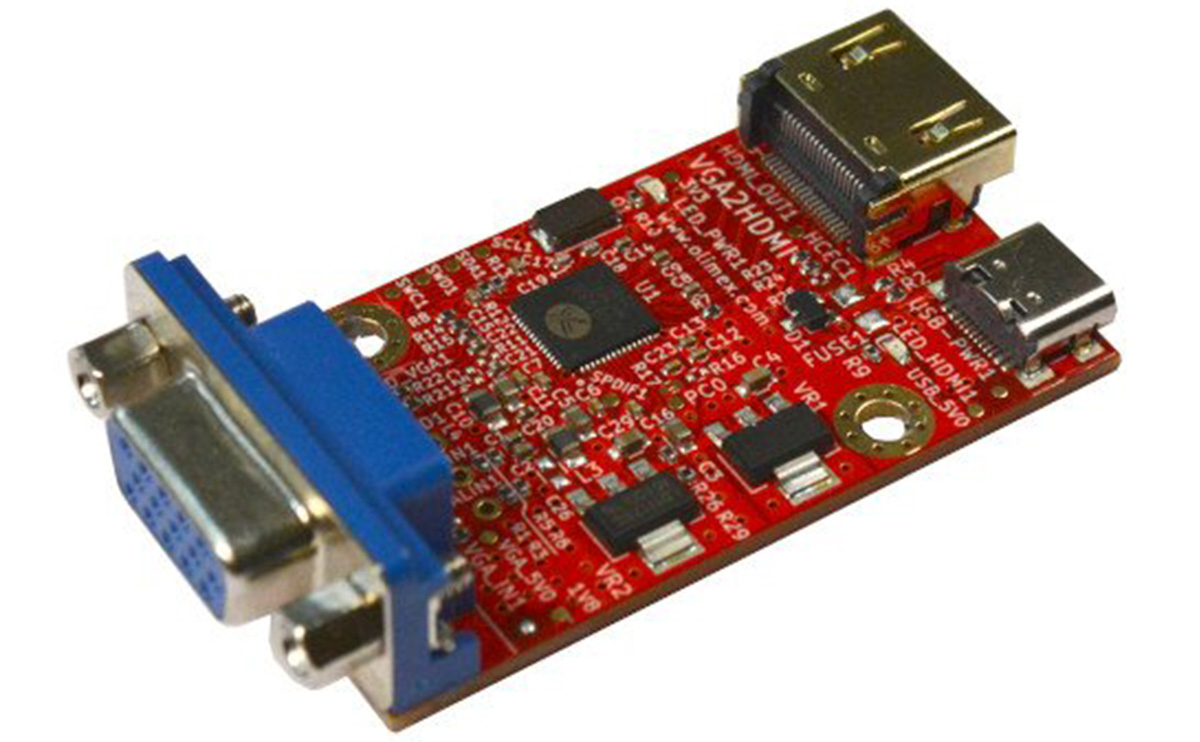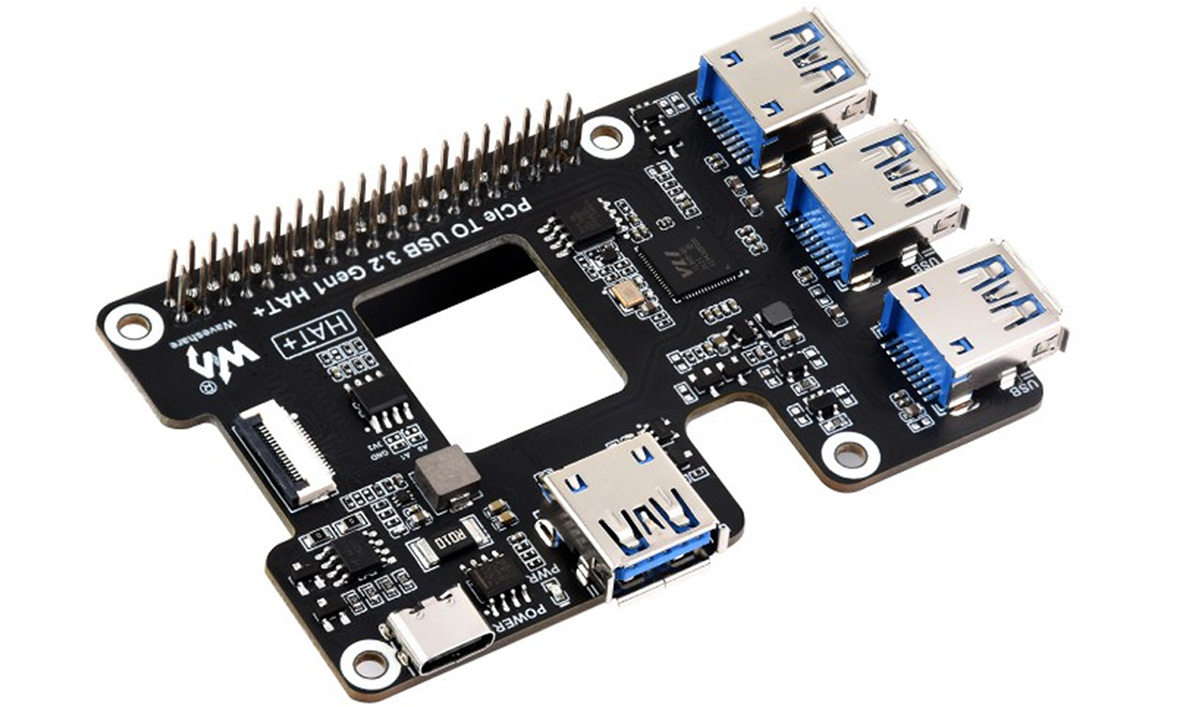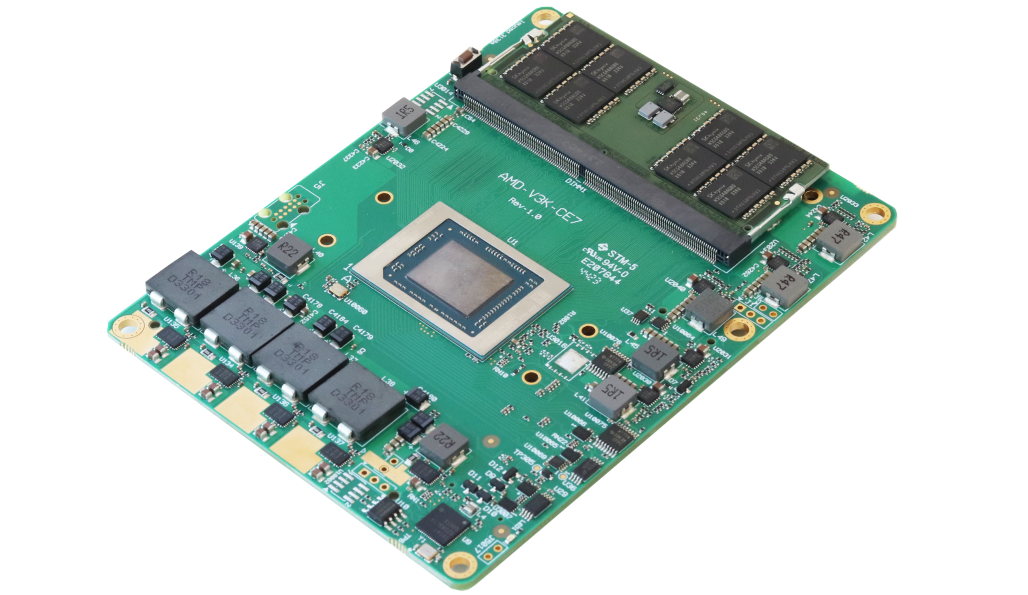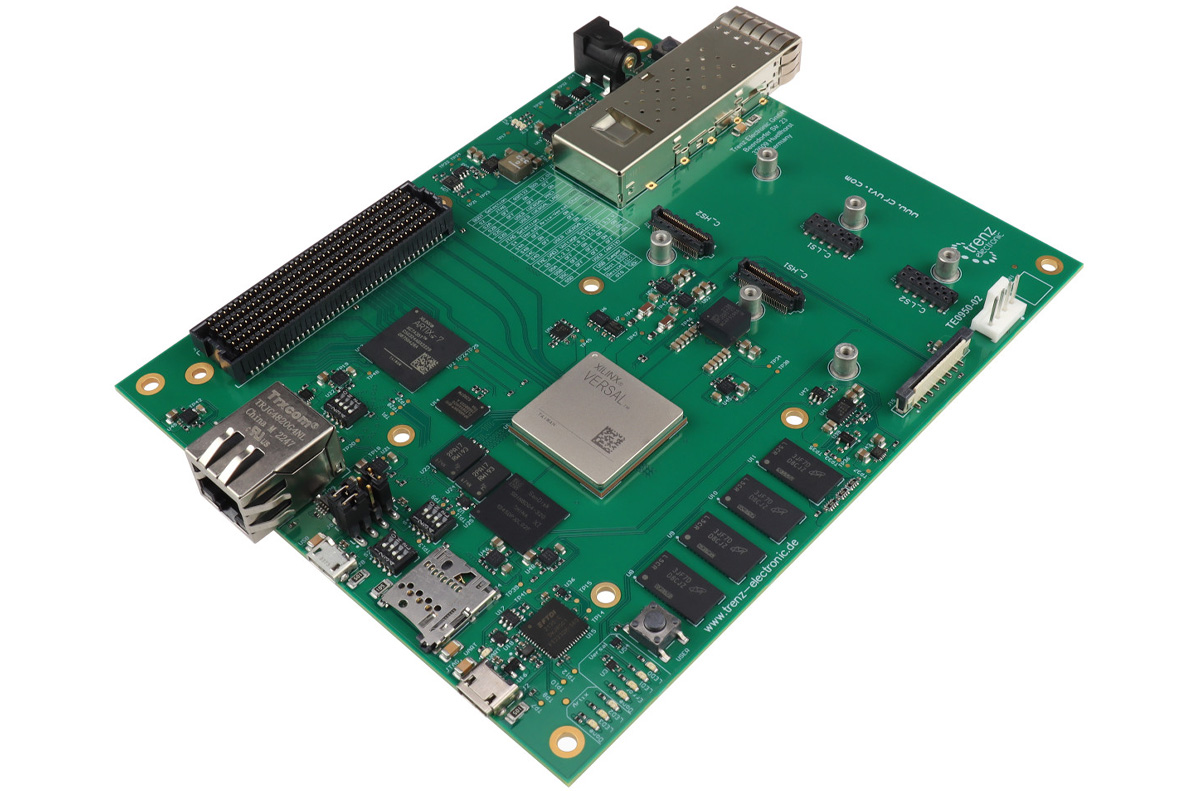Nuvoton has recently announced their M433 Series MCUs (M433LE8AE and M433SE8AE) along with the NuMaker-M433SE development board. Nuvoton is calling this the “M433 CAN/USB FS OTG” Series, featuring an Arm Cortex-M4F core with DSP and FPU extensions. The MCU is clocked at 144 MHz and consumes 350 nA in deep power-down mode, making it ideal for battery-operated IoT, industrial, and consumer applications. This is not the first Nuvoton MCU we have written about. In recent months, we have seen Nuvoton release the NuMicro M091 Series, the Nuvoton MA35H0 – a cost-optimized MPU, and other dev boards and MCUs. Feel free to check those out if you are interested in the topic. Nuvoton M433 Series MCUs specifications: MCU core 144 MHz Arm Cortex-M4F Includes DSP and FPU instructions Memory Protection Unit (MPU) with 8 regions Memory Up to 128 KB Flash 4 KB LDROM Up to 64 KB SRAM with parity […]
Quectel KG200Z LoRa module is now secured by The Things Stack
In January of this year, Quectel launched the KG200Z LoRa Module, an Arm Cortex-M4-based module boasting a self-proclaimed range of 2-5 kilometers in urban settings and 10-15 kilometers in suburban areas. At that time, it was just another LoRa module with some additional features. However, in the latest development, Quectel and The Things Industries have announced a partnership that ensures this LoRa module comes integrated with “Works with The Things Stack” and “Secured by The Things Stack” certifications, enhancing its value and utility. In simpler terms, it’s been tested and proven to operate smoothly within The Things Stack ecosystem. Earlier this year, we saw STMicro and Particle Industries release their LoRa-based modules and devices. Feel free to check those out if you are interested. KG200Z LoRa Module Specification: Arm Cortex-M4-based standalone LoRa module (STM32WL) Frequency support – 470–510MHz and 862–928MHz bands Low power – 1.7 μA in deep sleep mode […]
Renesas AIK-RA4E1 and AIK-RA6M3 reference kits are designed for accelerated AI/ML development
Renesas AIK-RA4E1 and AIK-RA6M3 are two new development boards based on RA-series 32-bit microcontrollers. These new dev boards have multiple reconfigurable connectivity functions to accelerate AI and ML design and development time. Both boards appear similar, but the AIK-RA4E1 uses the R7FA4E110D2CFM MCU, features three Pmod ports, and has no Ethernet support. On the other hand, the AIK-RA6M3 utilizes the R7FA6M3AH3CFC MCU, has six Pmod ports, and includes Ethernet support. Both the boards support full-speed USB and CAN bus. Renesas AIK-RA4E1 and AIK-RA6M3 reference kits specifications (Consolidated): RA4E1 Microcontroller Features: Model: R7FA4E110D2CFM Package: 64-pin LQFP Core: 100 MHz Arm Cortex-M33 SRAM: 128 KB on-chip Code Flash Memory: 512 MB on-chip Data Flash Memory: 8 KB on-chip RA6M3 Microcontroller Features: Model: R7FA6M3AH3CFC Package: 176-pin LQFP Core: 120 MHz Arm Cortex-M4 with FPU SRAM: 640 KB on-chip Code Flash Memory: 2 MB on-chip Data Flash Memory: 64 KB on-chip Connectivity: One USB […]
$6.99 Waveshare’s ESP32-C6-Pico Board resembles Raspberry Pi Pico board
Waveshare’s ESP32-C6-Pico and ESP32-C6-Pico-M development boards are equipped with the ESP32-C6-MINI-1 module supporting Wi-Fi 6(802.11ax), Bluetooth 5, Zigbee 3.0, and Thread 1.3, and inspired by the Raspberry Pi Pico form factor. They can be powered either through USB Type-C or an external 5V DC supply connected to the pins. Previously we have written about similar ESP32-C6-based boards like the SparkFun Thing Plus, ePulse Feather C6, and WeAct ESP32-C6 dev board. However, these boards are priced way over the $6.99 that Waveshare is offering. One exception is the DFRobot’s FireBeetle 2 ESP32-C6 board, which cuts costs by using the IC directly instead of the fully shielded ESP32-C6-MINI-1 module. Waveshare’s ESP32-C6-Pico board specifications: Wireless module – ESP32-C6-MINI-1 SoC – ESP32-C6H4 32-bit RISC-V microprocessor up to 160 MHz with 320KB ROM, 512KB HP SRAM, 16KB LP SRAM, 4MB flash Wireless – 2.4 GHz WiFi 6 with Target Wake Time (TWT) support, Bluetooth 5.3 LE and […]
Olimex VGA2HDMI is an open hardware board for VGA to HDMI conversion
Olimex VGA2HDMI is an open-source hardware VGA-to-HDMI converter specially designed and tested to work with the CERBERUS 2100, AgonLight 2, and Agon Origins boards. The board has a VGA port as input and an HDMI port as output and a USB-C port is there to provide the external power required for the board. In one of our previous posts, we wrote about the NovaVGA Shield, which adds VGA output to your Arduino UNO. Now, with the help of this board, that capability can be extended to HDMI. There are also extenders that carry VGA signals over Ethernet cables, a topic we have covered in another post. With this new board, you can convert that VGA signal to HDMI. It’s not like there aren’t other VGA to HDMI converters on the market; a quick Amazon search gave me the VENTION VGA to HDMI Adapter, but among them, most were HDMI to […]
Waveshare PCIe to USB 3.2 HAT+ adds four USB ports to Raspberry Pi 5
Waveshare ‘PCIe to USB 3.2 HAT+’ is an expansion hat that adds four USB 3.2 ports to the Raspberry Pi 5. The HAT+ features real-time power status monitoring and software-controlled USB power management, along with an onboard EEPROM for storing HAT ID and product data. The HAT is mounted on top of the Raspberry Pi cooler and has an airflow vent to help keep the Pi cool. This new module leverages the HAT+ standard to add 4 additional USB 3.2 ports to the Raspberry Pi 5. Previously, boards like PineBerry Pi HAT+, Geekworm X1003/X1004, and Mcuzone MPW7 have used the HAT+ standard for various attachments, such as converting the Pi 5’s PCIe into an NVMe SSD adapter, enabling access to Google’s TPU, or adding a PCIe x16 socket. Waveshare PCIe to USB 3.2 HAT+ Specifications PCIe x1 Gen2 mode Only supports Raspberry Pi 5 Model B. Equipped with VL805 original […]
SolidRun’s first COM Express module is powered by the AMD Ryzen V3000 series APU
SolidRun has recently introduced the “Ryzen V3000 CX7” x86-based CoM Express 7 module powered by an AMD Ryzen V3000 Series V3C48 or V3C18I APU. This module is designed with AMD’s 6nm ‘Zen3’ architecture and can reach speeds up to 3.8GHz. It supports up to 96 GB of DDR5 memory, which can be either ECC or non-ECC, offering strong performance for different uses. The module features 20 PCIe Gen4 lanes, dual 10Gbps Ethernet MAC, and two SATA Gen3 6Gbps interfaces (on V3C18I and V3C48 models) all these features make this module useful for high-speed networking, embedded computing, and storage applications. Previously we have seen many similar COM Express & other modules based on the Ryzen V3000 Series of APUs including the ADLINK Express VR7 (COM Express) and another custom CPU module found in SolidRun Bedrock V3000 fanless industrial computer. Feel free to check those out if you are looking for similar […]
Trenz Electronic TE0950-03-EGBE21A – An AMD Versal AI Edge VE2302 SoC FPGA evaluation board
Trenz Electronic recently announced the TE0950-03-EGBE21A an evaluation board with AMD Versal AI Edge XCVE2302-1LSESFVA784 SoC FPGA. This board features 8 GB of DDR4 SDRAM and 128 MB of SPI Flash (as the primary boot option), a microSD card slot, a 32 GB eMMC flash (secondary boot), and an EEPROM with a MAC address. Additionally, the board supports a range of VE-series devices, such as VE2002, VE2102, VE2202, VE2302, and VM1102, enhancing its application versatility. The AMD Versal is a family of adaptive compute acceleration platforms (ACAPs) designed by AMD. Following its acquisition of Xilinx, it integrates CPU, GPU, and FPGA technologies along with dedicated software support to create a highly flexible development environment. Trenz Electronic VE2302 Evaluation Board Specifications: SoC – AMD Versal AI Edge XCVE2302-1LSESFVA784, A784 package, compatible with multiple VE-series devices RAM – 8 GB DDR4 SDRAM Storage 128 MB SPI Flash (primary boot option) MicroSD card […]


